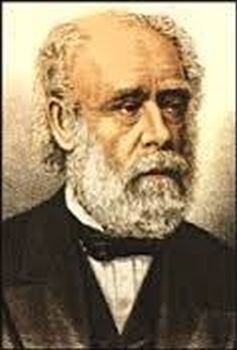Joseph Whitworth: Setting the Standard for Engineering
February 7th, 2017

Following our recent expansion, we’re proud to have renamed our new office ‘Whitworth House’ after local engineer Sir Joseph Whitworth, born in Stockport, Cheshire, in 1803.
We knew that Whitworth was a remarkable engineer, but recently we were able to learn more about him from our colleague Gordon Browne, who shared with us his research into Whitworth’s life and work.
If Joseph Whitworth’s name is already familiar, it’s most likely due to his development of a rationalised system of screw threads and those that bear his name; British Standard Whitworth (BSW). He proposed his thread system in 1841, recommending a standard screw thread with a fixed thread angle of 55 degrees and having a standard pitch for a given diameter. The relevant British Standard is BS84: 1956.
However, the principal contribution of this exceptionally talented engineer was his introduction of new standards of accuracy in manufacturing to a degree previously unknown.
By 1830, a skilled mechanic could be expected to work to an accuracy of a ‘bare sixteenth’ of an inch. By 1840, though, thanks to Joseph Whitworth, an accuracy of one ten-thousandth of an inch was a practical proposition.
Subsequently, Whitworth devised an instrument – a bench micrometer – that could measure to one millionth of an inch, earning him international fame.

He also introduced a standard for the flatness of plane surfaces, which was essential for fine engineering work and for the manufacture of surface plates.
Although he held 48 patents for a variety of machines and processes, his involvement in the evolution of machine tools was a major factor in the gigantic engineering undertakings by such men as George A Robert Stephenson and I K Brunel.
His development of steel processing for use in armaments, and the manufacture of both defensive/aggressive armaments resulted in him receiving various awards of honour from countries overseas. In the Great Exhibition of 1851, he had 23 exhibits and won more awards than any other exhibitor.
These achievements are all the more impressive considering that Whitworth received only an elementary education. Following an apprenticeship to an uncle who was a cotton spinner in Derbyshire and a further four years as a mechanic in a Manchester factory, he then found employment working for Henry Maudsley (1771-1831), inventor of the screw-cutting lathe. Under Maudsley’s tuition, Whitworth developed immense skill as a mechanic, laying the foundation for his later success.
During his career, he rose to become a Fellow of the Royal Society (FRS), a Baronet and the recipient of honorary degrees from the University of Oxford and Trinity College, Dublin.
Following Whitworth’s death in 1887, his large estate was administered according to his wishes by his widow Louise, Robert Derbyshire and Copely Christie. His legacy included his estate at Fallowfield, Manchester, bequeathed to Owens College; Whitworth Art Gallery and Park; Whitworth Hall; and in Openshaw, the site of his largest factory, Whitworth Institute and swimming baths.
There was also his second estate at Darley Dale, Derbyshire, which included Whitworth Park and Institute, and Whitworth Hospital. Also, funds went towards Stockport Technical College and, with Copely Christie’s help, Christie Hospital.
The legacy of engineers such as Joseph Whitworth reminds us how past ingenuity forms the bedrock of continuing progress and development in engineering today. It is also pleasing to know that Stockport – the location of our HQ for over 25 years – has such a rich history in engineering.
Material courtesy of Gordon Browne, text compiled by Lorna Gilbert. With grateful thanks to The Whitworth Society for their assistance.
